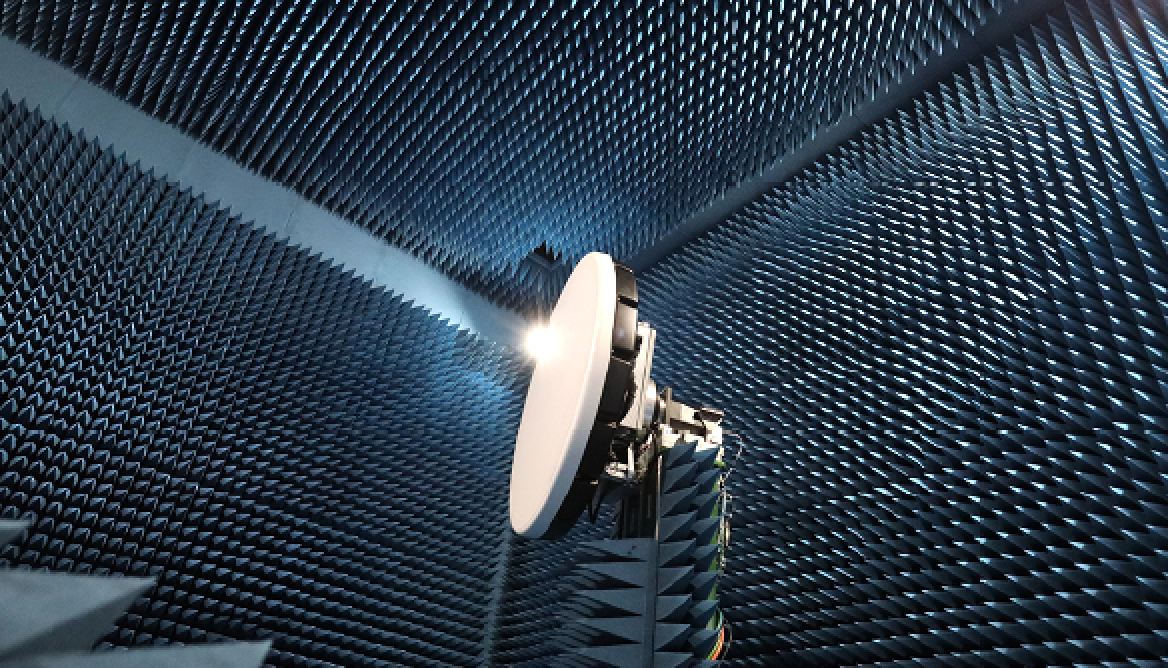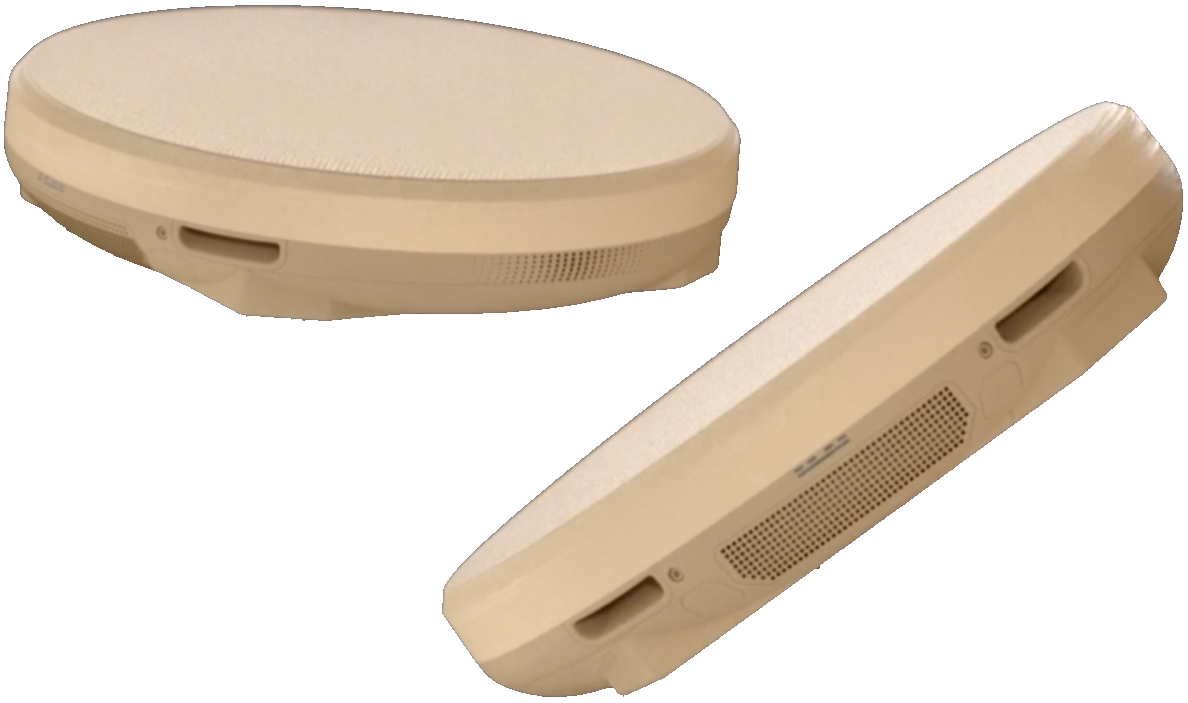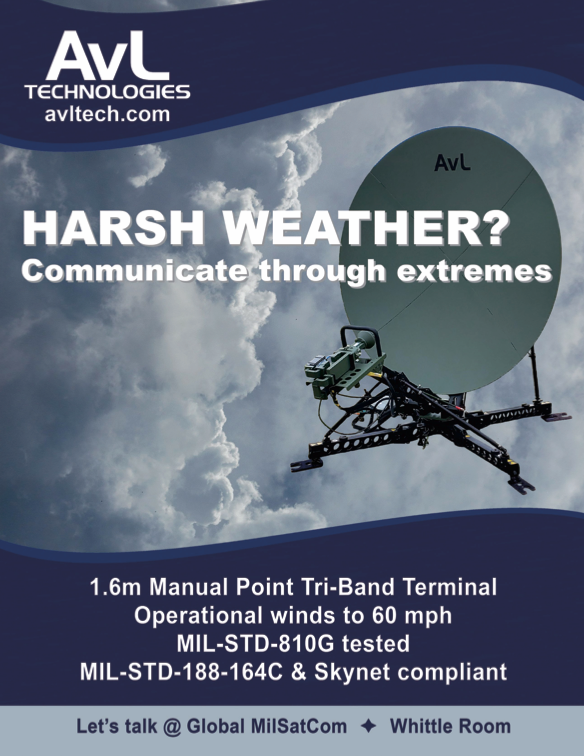John is a satellite and telecoms industry veteran, with over 25 years of industry experience and over $2 billion in new revenue creation directly attributed to his leadership. He pioneered significant success for start-ups Huawei (he led the expansion of Huawei in Europe) and O3b (a founding employee and Chief Commercial Officer) along with other major leadership roles such as global business unit leader for Alcatel-Lucent. Following the acquisition of O3b by SES, John focused on deep tech research in the ground sector that ultimately led to ALL.SPACE. John has been identified as a Top 40 Executive by Global Telecoms Business three years in a row.
Why is ALL.SPACE gaining so much interest currently and what exactly are the critical issues that the company addresses?

John Finney
John Finney
The global space industry is accelerating at an unprecedented pace, with a huge increase in satellite constellations anticipated in the coming years, particularly in Low and Medium Earth Orbits (LEO and MEO). As a result, the entire space industry is in the spotlight. Industry experts predict tens of thousands of satellites will be launched over the next decade; however, every single satellite network is a walled garden that cannot connect to other satellite networks.
ALL.SPACE addresses these two critical issues; the ability to connect to multiple satellites and multiple networks, and the ability to connect across orbits and integrate these new LEO and MEO constellations with GEO services.
At my last company, O3B, we developed a Non-Geo-Stationary Orbit (NGSO) satellite constellation that aimed to bring connectivity and communication all around the world and to reach parts that had been left behind. We had an incredible satellite solution but there was a significant gap in ground system technology. The antenna, modem and related networking equipment on the ground that connects to the satellites was using technology that was invented decades ago and simply couldn’t keep pace with the rapidly advancing space technology. I set out to solve that problem with ALL.SPACE.
Why is connecting across satellite networks and orbits so important today?
John Finney
Users want ubiquitous and high-performing connectivity, just like they get from their terrestrial communications services. This desire isn’t just for convenience — it’s because today’s applications and data services require this type of always-on, always available connection. To be successful, satellite services have to offer high-bandwidth, high availability and low-latency. The traditional walled-garden approach previously taken cannot meet these goals. At ALL.SPACE, we break down these walls and provide our customers with the ability to create integrated networks combining GEO and NGSO services into better performing and cost-effective solutions.
Having multiple connections means redundancy and resiliency, should any single service experience congestion. All NGSO networks require multiple connections to maintain continuous network services without dropping packets as satellites transit across the sky, known as make-before-break connections. Lastly, by merging different networks, we can take advantage of the best attributes of each type of service, all the while providing the ability to mitigate any disadvantages. We believe these integrated networks are the preferred approach for future satellite connectivity,and we see this being borne out by the multiple space companies and National Governments seeking these types of solutions to take advantage of the new NGSO constellations coming online, while also capitalizing on the existing satellites in service.

What makes ALL.SPACE’s solution unique?
John Finney
Ours is the first and only platform capable of simultaneous full performance connections to multiple satellites and we can extend that capability to connect to multiple satellites in varying orbits.
These new LEO and MEO satellites move across the sky quickly and need ground terminal solutions to rapidly and efficiently connect and handover to the next satellite as they orbit the Earth. ALL.SPACE’s multi-beam solution is capable of unlocking this connectivity, given its compatibility with existing and planned satellite systems and the ability to connect to multiple at once. This delivers a huge range of practical applications for government, defense, enterprise, maritime and aerospace users.
What makes ALL.SPACE unique is there are no other terminals that can do what we do — no one has ever been able to connect a ground terminal at full power to more than one satellite simultaneously. The significance of this cannot be over-estimated — our ground-breaking technology makes it possible to harness the potential of new LEO and MEO services with make-before-break connectivity, as well as integrate GEO services, and do it all in a way that increases throughput, adds resiliency, and improves application performance and service costs.
We unlock the full potential of space by giving our customers access to the combined strengths of all satellite networks that operate in their area. This is a game changer for the entire digital communications industry and will change the way society communicates and interacts with broadband data.
We have not seen such a significant telecom breakthrough since the advent of roaming mobile phones or the switch to broadband internet from dial up. The civil and defense applications are endless.
One device; all networks; no compromise — that is a world first.

What Impact will ALL.SPACE have on inter-network connectivity and service reliability?
John Finney
The element that makes our solution the world’s first smart terminal is what it can do behind the scenes to ensure our users have the fastest, most reliable, and most efficient connection.
It can monitor and assess a network’s resiliency in real time and make decisions to re-route traffic to other satellites or links to ensure a continual and reliable service. It can even monitor for blockages and interference in real time to combat accidental or intentional disruptions and improve connectivity uptime. This is incredibly powerful for any situation where resilience and reliability are key.
What are your key breakthroughs and why hasn’t this been possible before?
John Finney
Most antennas still rely on technology that is more than 30 years old and can only connect to one satellite at a time. We believe in tackling this structural problem head on — and not patch over these issues. It’s why we’ve invested so much in research and development and enabled our team to pioneer completely new areas of science, working at the level of fundamental physics to invent materials and structures that are fit for purpose and deliver exceptional performance. As a result, we have redesigned the way an antenna is built and how it converges advanced communications capabilities to deliver multiple links from a single aperture.
We have leveraged our revolutionary hardware capabilities to deliver advanced software features that can be enabled as needed in real-time to create the most capable terminal for mobility and remote applications. Not only can our antennas connect to multiple satellites, but we also do this without any loss of efficiency, making it a highly cost-effective, scalable solution. This capability allows us to create networks across service providers, developing integrated service solutions, and allowing customers to mix and match available services to meet their exact needs and use the best provider for each service.
All of this combines to allow our platforms to be used across a much broader range of satellites and services, as well as re-use of our platform if it is moved from one service area to another. This extends the usable life of our platform. The re-use capability is especially powerful for government and defense customers, creating the first solution that allows them to reconfigure the terminal for each mission no matter the location or mission.
 The ALL.SPACE terminal.
The ALL.SPACE terminal.
What makes your Ground Stations and services so different?
John Finney
We have developed the first software-defined smart terminal — layering in extensive compute and processing power on top of the advanced electronics and lens technology at the heart of our platform — providing us with capabilities and performance that sets us apart from the competition. First, our lens technology allows for sophisticated beam bending and shaping for industry-leading scan performance at much lower power consumption levels than others, and across a much broader frequency range and parameters, which enables the terminal to connect to both government and commercial satellites in any orbit.
Next, our platform has significant compute capabilities, allowing it to make extremely fast and fine adjustments to its satellite connections and network routing to direct traffic intelligently and efficiently across all available links, thereby maximizing throughput and uptime while minimizing service costs. In addition, the high levels of compute and signal processing empower a host of new capabilities such as sky mapping, blockage detection, and interference mitigation. This combines to create more dependable connectivity, especially for mobility applications.
And finally, the software-defined nature of the platform and the extra compute capabilities allows us to add capabilities, upgrades, reconfigure, and execute software-as-a-service or customer edge compute services remotely. This greatly enhances the capability set today, allows it to grow in the future and extends the service life, and thereby value, to our customers. All of this, combined with our core multi-link capability, enables us to create networks across service providers, deliver integrated multi-service solutions that allow customers to mix and match available services to meet their exact needs, and use the best provider for each service.
Where did the idea come from, and how does this new technology work?
John Finney
The ability to connect to multiple satellites without any loss of efficiency has been an enigma for the entire space industry. For decades, many companies and research labs tried to achieve this goal, but none were successful. ALL.SPACE took a completely different approach to the legacy technology that was inspired by a Roman drinking glass, the Lycurgus Cup. This cup bends light to illuminate with different colors depending on the angle that the light hits the glass. ALL. SPACE takes this concept and uses patented lens technology that bends radio waves so that they can be formed and focused as desired to create satellite links.
What will be your first market and who are you first customer/s?
John Finney
There is a lot of interest for this type of multi-link full performance solution, so demand is high. But specifically, within the Government and Defence market, there is a lot of pent-up demand where our product is key to unlocking previously unmet capability and resiliency requirements, especially for mobility applications. There is also a lot of interest with Satellite Service Providers who are seeking a terminal that meets their desire for one solution that can address multiple use cases and has the ability to integrate with NGSO providers. We have already completed successful tests for the Government and Defence markets, and have generated significant interest for our capabilities from several other sectors as well.
How will ALL.SPACE’s solution provide benefits for the Government and Defense sectors?
John Finney
The recent anti-satellite (ASAT) tests held by Russia and China, the Russian invasion of Ukraine, and the successful hacking of satellite terminals and intentional interference of communications systems, all highlighted the contested nature of space and the need for resilient communications networks for governments and military. Increased global tensions, heightened security risks, and the ability to disable undersea cables as well as satellite communications from the ground, mean that Governments require systems that can provide resiliency and redundancy to overcome any loss of a single or even multiple communications services.

In simple terms, a single ALL.SPACE terminal performs the role of multiple physical terminals by creating concurrent ,full performance links to multiple satellites or networks. Current technology requires government agencies or military forces to use one antenna to point to one satellite, and, unfortunately, require a second, third and fourth antenna to provide redundant back up links. This is cumbersome, costly and requires too much space aboard ships, vehicles and in the field, where space is at a premium.
Our new smart terminal allows NATO to deliver mission critical HD video surveillance via one satellite link (likely LEO to handle the high bandwidth and low latency needs of the data), while other data is intelligently routed, based on real time network assessment to war fighters on the front lines (using other links if more efficient). The multi-link capability provides high-assurance comms over the best available networks, instantly and automatically routing traffic over the best available link - providing much needed flexibility and resiliency.
What are the other key sectors and markets you will be addressing?
John Finney
Several telecom and satellite operators, including those in traditional GEO orbits as well as NGSO providers, are working with us to maximize the efficiency of their multi-orbit assets in an increasingly competitive landscape, where they need to find unique ways to differentiate themselves.
We are already under contract to deliver a rail solution for universal passenger connectivity and also have several engagements with partners in the aerospace and maritime markets that demand the highest levels of performance and reliability to address those moments that really matter for their customers.
Our partners are looking for solutions that will provide them with flexibility to connect to multiple satellites in space at different orbits and create a robust and resilient network to provide high speed connectivity for their customers in the air.
How has the recent M&A in the satellite sector impacted your business?
John Finney
The recent flurry of deals in the satellite sector has seen the traditional larger satellite operators, such as Eutelsat, look to merge or secure exclusive partnerships with the newer LEO operators, such as OneWeb. This consolidation is being driven by the need to create more efficient and resilient networks in space, and by the drive to create more efficient use of the assets already in orbit.

By combining GEO and NGSO services into an integrated plan, the best attributes of each can be brought to bear for the customers benefit. This includes higher throughput, lower latency, resilient connectivity, and lower overall costs. From an operator’s perspective, this allows for least cost routing and more efficient use of space assets.
We believe this is the future of satellite comms; multi-service plans that link different providers and different orbits into a coherent network. The M&A market seems to support this belief. To make this vision work, one must invest in modern ground systems to efficiently link the many satellites in multiple orbits, and ALL.SPACE is perfectly positioned to capitalize on these growing needs.
www.all.space


